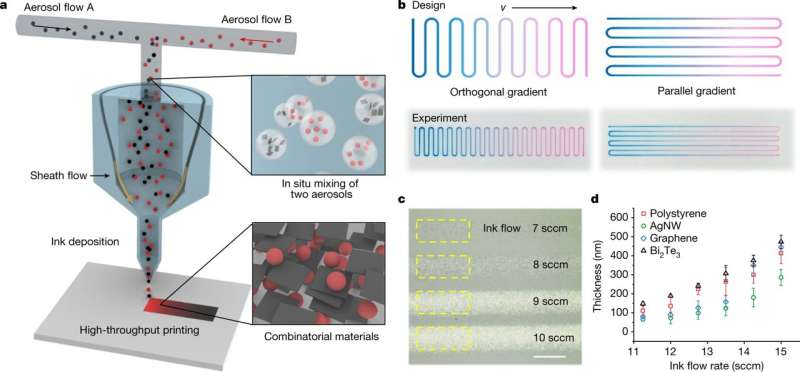A groundbreaking 3D printing method has emerged as a “game changer” in the field of material discovery and manufacturing. Developed by Yanliang Zhang, an associate professor at the University of Notre Dame, the high-throughput combinatorial printing (HTCP) technique enables the creation of materials that conventional manufacturing methods cannot match.
By combining multiple aerosolized nanomaterial inks in a single printing nozzle and adjusting the ink mixing ratio during the printing process, HTCP allows for precise control over the 3D architectures and compositions of printed materials.

The HTCP method holds tremendous potential for accelerating the discovery of new materials, which is typically a slow and labor-intensive process.
“It usually takes 10 to 20 years to discover a new material,” said Yanliang Zhang, associate professor of aerospace and mechanical engineering at the University of Notre Dame.
“I thought if we could shorten that time to less than a year—or even a few months—it would be a game changer for the discovery and manufacturing of new materials.”
Mixing at the Microscale
The ability to rapidly produce materials with gradient compositions and properties at a microscale resolution opens up exciting possibilities for various industries, including clean energy, electronics, and biomedical devices.
The versatility of the HTCP method extends to a wide range of materials, including metals, semiconductors, dielectrics, polymers, and biomaterials. By generating combinational materials that function as libraries with thousands of unique compositions, HTCP offers a powerful tool for materials discovery. In fact, Zhang and his team have already leveraged this technique to identify a semiconductor material with exceptional thermoelectric properties, a significant advancement for energy harvesting and cooling applications.
Moreover, HTCP is capable of producing functionally graded materials that exhibit a gradual transition from stiff to soft. This characteristic makes them particularly valuable in biomedical applications that require compatibility between soft tissues and rigid wearable or implantable devices.
Accelerating with AI
Looking ahead, Zhang plans to combine HTCP with machine learning and artificial intelligence to further accelerate materials discovery and development. By harnessing the data-rich nature of HTCP, his team aims to create an autonomous and self-driving process for materials discovery and device manufacturing, freeing up researchers to focus on high-level thinking.
You can read the full research paper, titled “High-throughput printing of combinatorial materials from aerosols” in Nature, at this link.
Come and let us know your thoughts on our Facebook, Twitter, and LinkedIn pages, and don’t forget to sign up for our weekly additive manufacturing newsletter to get all the latest stories delivered right to your inbox.









